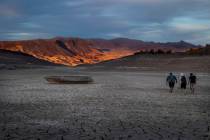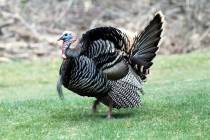Palma competition gives new appreciation for marksmanship
We've all heard the stories about the guy who shot his deer, elk, bear or (fill in the blank) with a spectacular shot at 600, 700 or even 800 yards. A few of us probably have told such stories. The story usually authenticates how the distance of the shot was determined. Such statements are designed to add credibility to an otherwise eyebrow-raising narrative.
In the old days of low-tech hunting, we simply would say something like: "I know it was 535 yards because I paced it off myself!" But the local topography, elevation changes and foliage detours never were taken into account.
But in today's world of high-tech gadgetry, we authenticate the story of an ultra long-distance hunting shot by telling listeners: "I looked through my (insert name brand) mega rangefinder and ranged him at 650 yards."
The storyteller often embellishes on the already unbelievable by adding the details of Kentucky windage needed to make such an impressive shot.
"Knowing that my rifle was zeroed in 3 inches high at 100 yards, I held the crosshairs about 2 feet over his back and squeezed the trigger. Got him with one shot, right through the boiler room!"
Having seen countless hunters firing their rifles on their once-a-year trips to the range, I think most of these stories are tall tales. With the exception of shooters who have undergone military training as long-distance shooters, or something similar, the average hunter can't make those shots -- not without an awful lot of luck, and not ethically.
This reality was reinforced while observing a Palma Trophy Match held recently at the Boulder Rifle and Pistol Club in Boulder City. The Palma match is the "America's Cup" of long-distance shooting dating to 1876. Competitors shoot at distances of 800, 900 and 1,000 yards. The bull's-eye is a 20-inch 10 ring within a black circle measuring 44 inches across. That, in turn, is mounted on a 6-foot frame.
Even from the closest distance of 800 yards, that 44-inch circle seemed awfully small as I looked through a spotting scope. My guide, Gino Guarna, pointed out shooters monitor heat waves, which I could see. Those waves helped shooters make adjustments for wind and shifting air currents. He explained the wind might be different at the target stand than it is midway down the range. And Palma competitors have to do that while using only iron sights.
As we observed a round of shooting from inside the spotters pit below the raised target frames, Guarna said the slightest wind can blow the mandatory 155 grain Sierra Match King bullet in .308 Winchester well off course. Stiff wind was blowing that day, and as we watched the spotters mark the targets, I could see what he said was true. Despite shooting from the prone position, some shooters were having trouble grouping their shots at 800 yards. They still were terrific at that distance, just not what they expected.
It didn't take me long to gain a new respect for true long-distance shooters. I now believe long-distance shooting isn't something you do without a lot of practice. By the way, there was a class of shooter at the match that uses high-power optics, but their shot groups were only slightly smaller than some of those shot with iron sights.
Consider that the chest cavity of the average mule deer is no larger than that 20-inch 10 ring, and you can see why I am skeptical of the average hunter's ability to make those long kill shots.
A magnum rifle in any caliber does not a marksman make.
Freelance writer Doug Nielsen is a conservation educator for the Nevada Department of Wildlife. His column is not affiliated with or endorsed by the department. Any opinions he states in his column are his own. He can be reached at doug@takinitoutside.com.

















